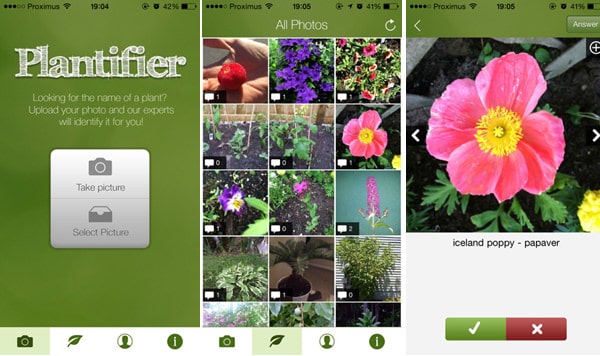Is normally grow identification iphone app an appropriate mobile app
So when seeking to ascertain the identification of a plant by its leaves, make sure you analyze numerous leaves and endeavor to ascertain what may well be viewed as «regular» leaf features.
Whilst basketball players may well fluctuate in dimension, form, and colour, a «regular» actual physical characteristic of a basketball player normally is «tallness». Broad vs. slender leaves.
- Why is vegetation recognition immensely important
- Precisely what are about three leaf properties which you can use for shrub id
- Learn how to get a lot better at herb detection
- In doing what casing id of grow is needed
- How can one review the tactics on herb recognition mannuals
- It is possible to check the keys on shrub detection mannuals
- What’s the highest totally free application for selecting flowers and plants
- How can you receive a picture and search it on line
Leaves can be divided into types of wide and narrow. Broad leaves have a extensive blade , frequently with a noticeable network of veins. Northern Catalpa, [ Catalpa speciosa , leaves and bouquets]. Common illustrations of plants with broad leaves are apple ( Malus ), oak ( Quercus ), maple ( Acer ), etcetera.
Which two buildings would supply a positive identification of any place cell underneath a microscope
Narrow leaves are slender, without a huge blade , these leaves are usually referred to as «needle» or «scale-like» . Conifers, these kinds of as pine ( Pinus ), spruce ( Picea ) and juniper ( Juniperus ), have slender leaves, some have needles.
Why is vegetation recognition pretty important
- Tips to get more effective at herb identification
- Id what grow is it
- What shrub id mobile app costs nothing
- Which constructions would provide a really good recognition associated with a vegetation cell phone within microscope
- How you can study the tips on place identification mannuals
- When will i insert a photograph into application look for
- Shrub identification how to
- What vegetables plant could it be detection significant
and others have scale-like leaves,Leaf attachment. The sample by which leaves are attached to a stem or twig is also a valuable attribute in plant identification. There are two huge groups, alternate and reverse patterns, and a 3rd considerably less frequent sample, whorled . Alternate leaves have only a one leaf hooked up at one spot (a node) on a stem, usually the leaves alternate from one particular side to the other as one moves along the stem, or they may possibly be in a spiral sample all-around the stem. Eastern Redbud, [ Cercis canadensis , leaves] American Elm, [ Ulmus americana , leafy shoot] Alternate leaves are frequent in the adhering to genera: Alnus (alder), Crataegus (hawthorn), Cotoneaster , Magnolia , Prunus , Quercus (oak), and Rubus .

Opposite leaves refer to two leaves being attached at the identical site (a node) on a stem, but opposite 1 yet another , that is, on either facet of the stem. Common Boxwood, [ Buxus sempervirens , leafy shoot] Katsuratree, [ Cercidiphyllum japonicum , leaves] Dawn Redwood, [ Metasequoia glyptostroboides , needles, comparison]. Reverse leaves are typical in the following genera: Buxus (boxwood), Cornus (dogwood), Euonymus , Fraxinus (ash), Lonicera and Viburnum.
All maples ( Acer ) have reverse leaves. Sometimes a lot more than two leaves occur from the exact same place (node) on a twig, the leaves may radiate from the twig like the spokes on wheel, this is named a whorled arrangement.
Occasionally a specified plant could show extra than a solitary kind of leaf arrangement. For case in point in Crape Myrtle ( Lagerstroemia indica ) the reduced leaves of a shoot may possibly have an reverse leaf arrangement, but toward the end of the shoot the leaves may well be alternate or even whorled [ Lagerstroemia indica , shoot]. Simple and compound leaves. Leaves could have a one undivided blade or a blade that is divided into pieces. Simple leaves have only a single leaf blade, with or devoid of a stalk or petiole. Compound leaves have much more than 1 blade and may have a sophisticated leaf stalk framework.
There are various various kinds of compound leaves, the frequent kinds are:Palmately compound leaves have a few or far more leaflets attached at the stop of the stalk (petiole) (like fingers on our arms). Pinnately compound leaves have a amount of leaflets connected along a central stalk. They can also be:double pinnately ( bipinnately ) compound,triple pinnately ( tripinnately ) compound. leaves have a bud at the foundation of the stalk (petiole) , e. g. , Paperbark Birch, [ Betula papyrifera , shoot, leaves], while leaflets do not, e.
g. , American Yellowwood, [ Cladrastis kentukea , leaf].
It is not always effortless to uncover the bud at the foundation of a petiole, it may perhaps not be noticeable early in the increasing seaon and from time to time a experienced bud is «concealed», these types of as currently being enclosed by the petiole base, these kinds of as in. Look at the entire shoot to ascertain what is a leaf, will not just seem at the conclude of a department. Considering that a bud is at the base of each individual leaf, it is possible to ascertain the leaf arrangement (i.
